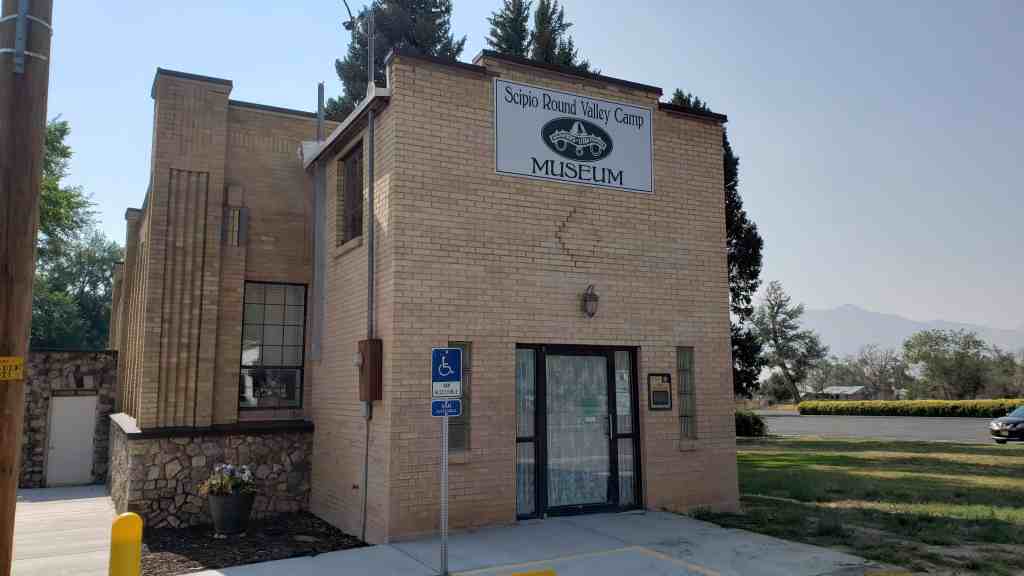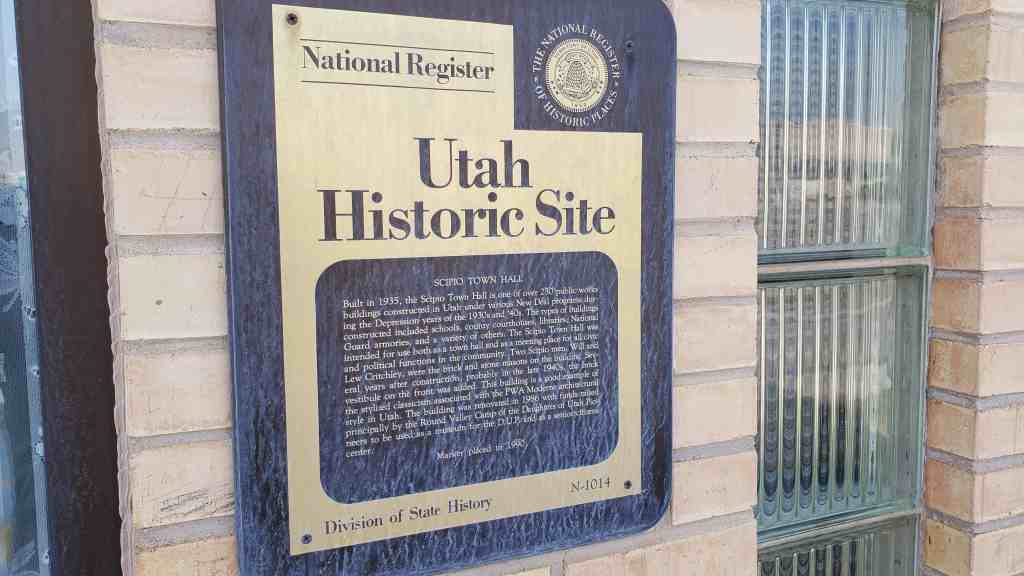Tags
City Hall Buildings, DUP, museums, New Deal Funded, NRHP, Scipio, utah
Built in 1935, the Scipio Town Hall is one of over 230 public works buildings constructed in Utah under various New Deal programs during the Depression years of the 1930’s and 40’s. The types of buildings constructed included schools, county courthouses, libraries, National Guard Armories and a variety of others. The Scipio Town Hall was intended for use both as a town hall and as a meeting place for all civic and political functions in the community. Two Scipio men Will and Lew Critchley were the brick and stone masons on the building. Several years after construction, probably in the late 1940’s, the brick vestibule on the front was added. This building is a good example of the stylized classicism associated with the PWA Moderne architectural style in Utah. The building was renovated in 1986 with funds raised principally by the Round Valley Camp of the Daughters of Utah Pioneers to be used as a museum for the D.U.P. and as a Senior Citizens Center.
Located at approximately 49 North State Street in Scipio, Utah and added to the National Register of Historic Places (#88002999) on December 22, 1988.
Related:
Built in 1935, the Scipio Town Hall is part of the Public Works Buildings Thematic Resource nomination and is significant because it helps document the impact of New Deal programs in Utah, which was one of the states that the Great Depression of the 1930s most severely affected. In 1933 Utah had an unemployment rate of 36 percent, the fourth highest in the country, and for the period 1932-1940 Utah’s unemployment rate averaged 25 percent. Because the depression hit Utah so hard, federal programs were extensive in the state. Overall, per capita federal spending in Utah during the 1930s was 9th among the 48 states, and the percentage of workers on federal work projects was far above the national average. Building programs were of great importance. During the 1930s virtually every public building constructed in Utah, including county courthouses, city halls, fire stations, national guard armories, public school buildings, and a variety of others, were built under federal programs by one of several agencies, including the Civil Works Administration (CWA), the Federal Emergency Relief Administration (FERA), the National Youth Administration (NYA), the Works Progress Administration (WPA), or the Public Works Administration (PWA), and almost without exception none of the buildings would have been built when they were without the assistance of the federal government.
The Scipio Town Hall is one 233 public works buildings identified in Utah that were built during the 1930s and early 1940s. Only 130 of those 233 buildings are known to remain today and retain their historic integrity. Twenty-two city halls were built; this is one of 17 that remain. In Millard County 10 buildings were constructed, of which only 6 remain.
The Scipio Town Hall was constructed as a Works Progress Administration (WPA) project and was intended for use both as a town hall and as a meeting place for all civic and political functions in the community. Two Scipio men, Will and Lew Critchley, were the brick and stone masons on the building. Several years after the building was constructed, the town board decided to add a sloping floor and put in some theatre seats so the townsfolk could enjoy a movie every Friday and Saturday night. Also at that time the brick vestibule on the front was added. The town board continued to hold their meetings in the basement of the building for a number of years after that. The building was vacant for several years until being renovated as a senior citizen center in 1985-86.







